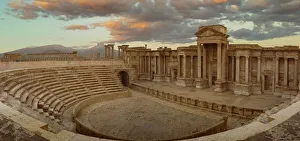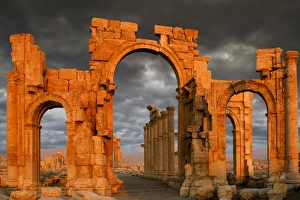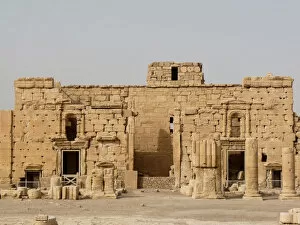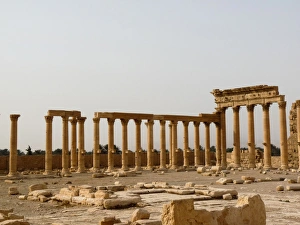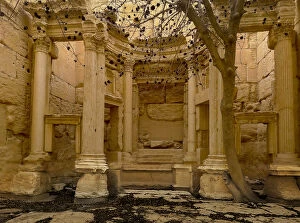Isil Militant Group Collection
Once a symbol of ancient beauty and cultural heritage, Palmyra now stands as a haunting reminder of the destructive power of ISIL
All Professionally Made to Order for Quick Shipping
Once a symbol of ancient beauty and cultural heritage, Palmyra now stands as a haunting reminder of the destructive power of ISIL. The monumental arch that once welcomed visitors to this historic city now lies in ruins, its grandeur reduced to rubble. The Roman Theatre of Palmyra, once filled with laughter and applause, is now silenced by the horrors inflicted upon it. Teatro di Palmyra, a testament to artistic expression and human creativity, has been marred by violence. The Roman Theatre in Palmyra was once a hub for entertainment and community gatherings – now it serves as a chilling reminder of the brutality unleashed by ISIL. As we gaze upon these shattered remnants, we cannot help but mourn the loss of history and culture that occurred here. In this land where civilizations thrived side by side for centuries, the triumphal arch that stood tall in Palmyra has fallen victim to destruction. Decumanus Maximus bears witness to the devastation wrought upon this ancient city – its streets no longer bustling with life but haunted by memories. The Temple of Bel in Palmyra was once an architectural marvel dedicated to worship and spirituality; today it stands desecrated by those who sought only chaos. The triumphal arch that adorned its entrance can no longer inspire awe or wonder – instead, it serves as a stark reminder of what humanity is capable of. As we reflect on these images from Olonnades at the Temple of Bel in Palmyra or columns standing strong at Philae Temple in Egypt - both sites targeted by ISIL - let us remember that our shared heritage should unite us rather than divide us. Let us stand together against those who seek to erase our past and destroy our future. Palmyra's fate serves as a somber warning about the importance of preserving our cultural treasures for generations yet unborn. We must remain vigilant against forces like ISIL which threaten not just physical structures but also erode our collective memory and identity.

